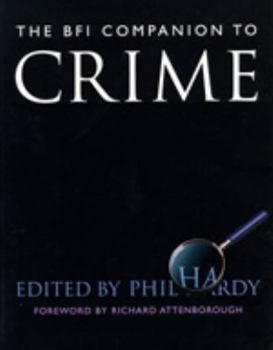The BFI Companion to Crime
Select Format
Select Condition 
Book Overview
Robbers, gangsters, murderers, and criminals of every description have long been a staple of popular entertainment. Movies are no exception, and film buffs and scholars alike now have a complete guide... This description may be from another edition of this product.
Format:Paperback
Language:English
ISBN:0520215389
ISBN13:9780520215382
Release Date:March 1998
Publisher:University of California Press
Length:352 Pages
Weight:2.85 lbs.
Dimensions:0.9" x 8.7" x 10.9"
Customer Reviews
1 rating
Sociohistorical Survey of "Crime in Film" Genre
Published by Thriftbooks.com User , 23 years ago
"There have always been crime stories," says Richard Attenborough, in his foreward to "The BFI Companion to Crime." Cinematic representations of crime and criminals are a worldwide phenomenon still in force after one hundred years. What editor Phil Hardy has done in his excellent reference book is to create an encyclopedic survey of the crime film genre from its "origins at a certain period in Europe in the late nineteenth century which saw the formation of an organised police force and the professionalisation of both the forces of law and the criminal . . . .[that] gave rise to a literature, of which Sir Arthur Conan Doyle is the first great exponent, in which the process of investigation is paramount . . . ." Such an investigation, or "police procedural," did not concern itself solely with crime-solving: an apprehension of the criminal, or "alleged perp," occurred. This "apprehension" involved a physical detention for questioning, as a means of "apprehending" the psychological and social dimensions of crime and criminal. In other words, the evolution of the crime film genre brought about an exploration of minds and motivations of criminals that would no longer be hidden in literary detail. "What then arose both in Europe and America during the 1920s," according to Mr Hardy, "were a series of representations of daring criminals (Fantômas, Dr Mabuse) and striking and highly popular recreations of the criminal underworld." The high energy of the Roaring Twenties during Prohibition, with its G-Men enforcers, produced the gangster film, a popular genre which initiated a "ripped from the headlines" approach to filmmaking that still persists today. A listing of these early gangster films would include: "Underworld" (1927), "Little Caesar" (1930), "The Public Enemy" (1931), and "Scarface" (1932). As the Depression of the 1930s wore on, people cheered gangsters in films and made them their folk heroes. After federal agent Melvin Purvis gunned down John Dillinger in 1934, the gangster film shifted into a subgenre; now cops and criminals would have double billing, and television entered the scene. (Fast forward to "The Untouchables," "The Godfather Trilogy," "Mean Streets," "Goodfellas," and "The Sopranos," to name but a few examples.)This "Companion" artfully deconstructs the complex genre (or subgenre) of film noir that emerged in the early 1940s. These films noirs (and neo-noirs) have generated a cottage industry of critical and popular texts. While I do not concur with the editor's thesis of "the lethargy that was film noir," I believe he presents quite valuable insights to the genre. Several sociohistorical factors came into play at the beginning of the 1940s: America's involvement in World War II; the resurgence of the American economy concomitant with Rosie-the-Riveter's replacement of men in the workplace; and the shifting roles of women and men ("Mildred Pierce"). Soon, contrasting and overlapping images of overworld and underworld intruded into





